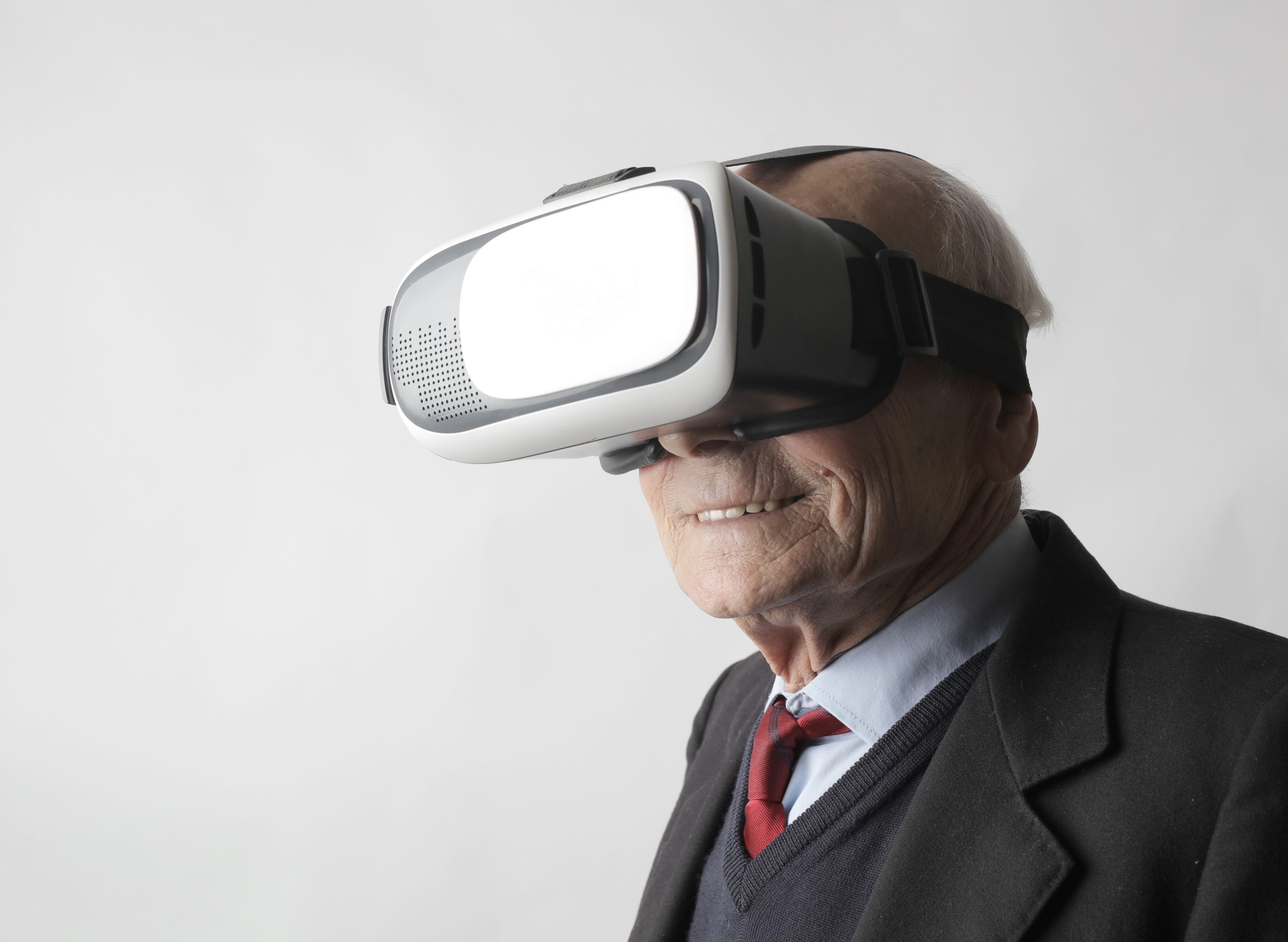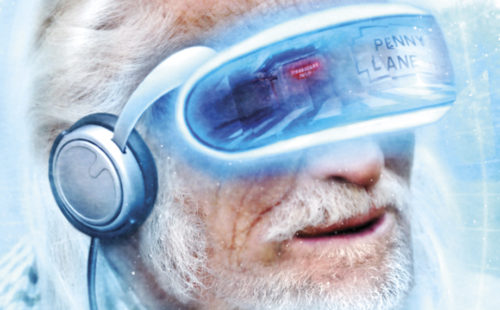latest
Getting Real: Hello, Goodbye – VR in end of life care
In ‘Goodbye‘, author Stephen Palmer, considers the use of virtual reality (VR) in end of life care. The story is the first in our Fictions series, which uses sci-fi as a vehicle for provoking new thinking about health and social care. Here, I respond by exploring some of the regulatory, ethical and practical considerations for applying VR in an end of life care setting, as well as more generally for health and social care.
Many people have faced the unexpected death of their loved ones during the COVID-19 pandemic. The Times recently reported a 32% increase in deaths at home, and GPs have written more than double the prescriptions normally required for end of life care. Much has been said about the support needs of those caring for the dying and the anguish of socially distanced funerals and virtual services.
When we, or those close to us, come face-to-face with death, how might we choose to say goodbye? Could VR or other technology enable a more peaceful death? Could it provide comfort to those left behind? How are funeral providers or hospices using VR? Would this sort of experience be part of a palliative care package, a one off bought experience or maybe it could be an area funeral homes move into?
VR provides a 3D environment for visualisation and interaction and is one of a range of “immersive technologies”. VR is typically created as an experience in a headset, and to interact with objects you need handheld controllers or some form of motion capture. The art of the possible in VR and immersive tech is developing rapidly, as is the policy and regulatory landscape. There are many VR experiences in the market, which not so long ago were purely science fiction. Some of you will have tried some of the experiences or games now available (a personal favourite is a game called Beat Saber).
VR was a feature in sci-fi writing as early as the 1930s, appearing in a short story series by Lawrence Manning, and more recently the book and film Ready Player One expanded on possible futures, where VR is central to human experience. In real life, meanwhile, there have been useful tools and content developed for health and care settings, and I particularly like many of the VR training setups. Some VR tools are being introduced for palliative care, for example in pain management. There have also been experiences developed specifically for those in care homes, so they can visit familiar and much-loved places.
The living funeral scenario is not something I have seen used, the closest I could find was this VR tour of a funeral home or this VR afterlife experience. Other questions are also raised by the VR experience in Goodbye. We need to think carefully about how we agree to being in a fabricated reality. It is not just content being presented, but increasingly what is being measured or captured about the users that we need to be aware of. The regulatory landscape for VR is nascent and I would recommend those interested to look at the Inline policy report on VR for a broader view than we cover here. In Goodbye, we do not know how the content for the funeral has been generated. Currently, VR content is designed and produced in a similar way to an animated film or computer game. However there are many groups developing methods to automatically generate content for VR headsets, but these are not currently production-ready. It is reasonable to assume that at some point, humans will not be generating all the content and there will be a significant portion generated automatically and tailored to the individual. If an automated system is used to generate an experience, it is difficult to say where the intellectual property (IP) rights belong, as well as to know what should happen to a person’s digital identity and data after they die.
In Goodbye’s “living funeral”, the content could have been selected from a series of downloadable experiences, which may be like watching a film. However, it could be something developed by the user or generated from the memories of a user. This information may be captured through an interview, or potentially one day through an EEG headset or neural interface. In this instance, who owns the IP and content? In a similar vein to IP rights, liability is crucial to consider with VR applications in health and social care. If we take the examples from earlier of pain management and clinical training, it is unclear how the clinical responsibility and liability should be managed, especially where content is no longer developed by a human. It is also worth considering that people who may be suffering from a range of cognitive or neuropsychiatric disorders potentially would not have the capacity to consent to be a part of any content being generated. If a living funeral were to be experienced, would accessing memories with power of attorney be considered legitimate?
Many VR games and experiences rely on real time feedback and streaming of data for personalisation and accuracy of content. This is excellent in terms of a lived experience, however there are many ethical and regulatory concerns associated with it. Biometric data is a focus of policy development in AI, where facial recognition technology takes centre stage. Recently more attention has been given to health data, such as symptom tracking as a result of the COVID-19 pandemic. In a VR environment the concerns around AI can be exaggerated further and lines blurred even more. If an experience is tailored in real time to your heartbeat, eye movements or biological responses to stimuli, how should this data be handled and secured? The protections around personal data are still being developed to account for newer forms of data driven technology.
The digital world relies heavily on advertising for revenue, and the introduction of targeted advertising through recommendation systems and AI approaches has made this more lucrative, while simultaneously increasing the potential for harm. Advertising is at times very intrusive, and clearly not appropriate at a funeral. In the UK, healthcare advertising is closely regulated, particularly around prescription medicines, however medical devices are not subject to specific regulation around advertising beyond consumer product legislation in the UK. It will be important to consider how less traditional devices, such as VR headsets, fit in regulatory frameworks.
The introduction of this technology in health and social care has great potential, however the source of the content and its development needs sufficient protections and safeguards in place, particularly for vulnerable populations.
In Goodbye, there are many emotive cultural references which, as a Beatles fan, hit home with great effect. While immersive experiences can be powerful, they have their limitations and currently cannot provide some of the real sensations people want. During COVID-19, we can see whoever we like through virtual means, but the news and social media are full of people asking when they can finally hug their grandchildren or parents in real life. Technology is incredibly powerful, but it is worth remembering that it isn’t the answer to every human problem.
If you have any suggestions, want to work with us or know the answers to some of our questions, please do get in touch: research@futurecarecapital.org.uk



